Top 10 hardy plants for late summer
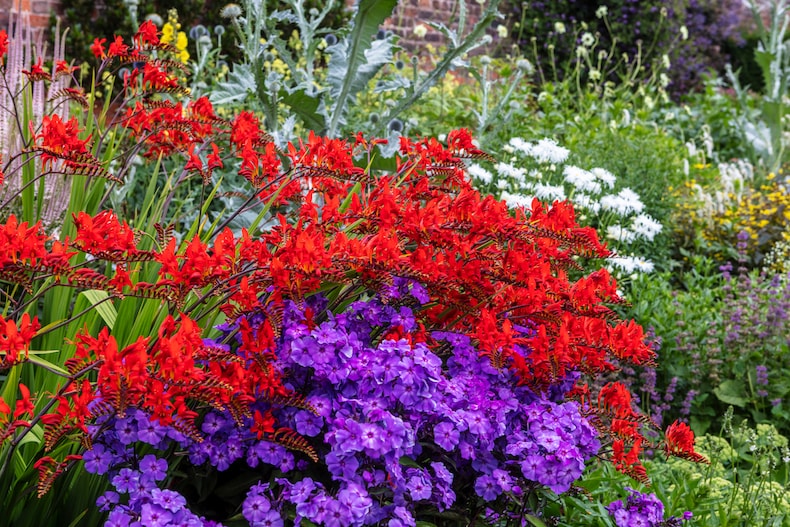
Plant crocosmia and phlox together for an eye-catching display of late summer colour
Image: Thompson & Morgan
By August, much of the early summer colour in the garden is beginning to fade. But if you want to continue your outdoor lifestyle for as long as possible, there’s no reason that you can’t have blooms long into autumn. If you want to extend the feel-good flowering season for another few months, here are 10 of our horticultural team’s favourite plants to brighten up the back end of summer.
For more inspiration, browse our full range of shrubs to find popular evergreens, colourful climbers and winter-flowering varieties.
- Crocosmia
- Tulbaghia
- Clerodendron
- Lobelia cardinalis
- Japanese anemone
- Verbena bonariensis
- Hydrangea paniculata
- Pennisetum
- Caryopteris
- Sedum
1. Crocosmia
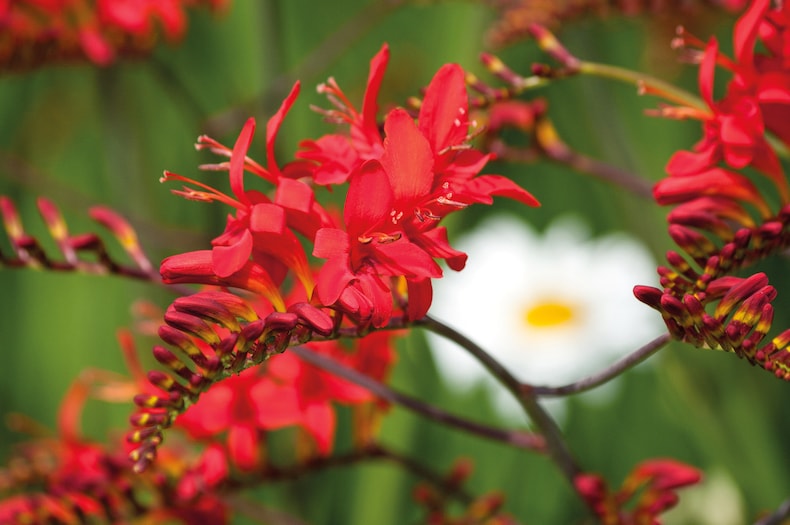
Use the towering blooms of crocosmia 'Lucifer' in striking cut flower displays
Image: Thompson & Morgan
From late spring, the upright, strap-like foliage of crocosmia adds height and structure to your garden long before the gorgeous flowers appear! Then in late summer, its arching stems are tipped with sprays of trumpet-shaped flowers in the brightest shade of yellow, orange and red. Crocosmia 'Lucifer' is one of the best known cultivars. Tough and reliable, the fiery scarlet blooms of this tall perennial look great in 'hot' borders.
2. Tulbaghia
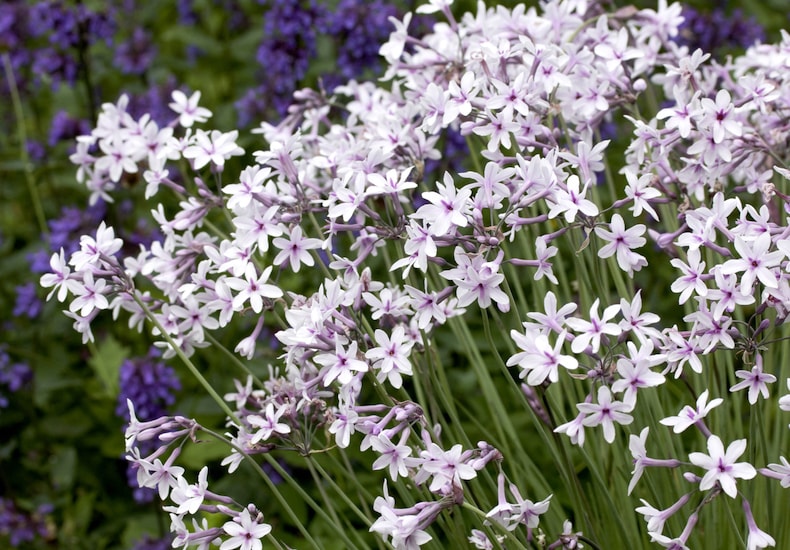
Grow Thulbaghia 'Purple Eye' to attract bees and butterflies to your plot
Image: Thompson & Morgan
I adore Tulbaghia! The slender grey-green foliage and soft lilac flowers make an elegant combination. Flowering from midsummer, this hardy plant gathers momentum before reaching its peak in August. Tulbaghia violacea is the hardiest of the family, overwintering successfully in well-drained, sheltered spots. This garlic-scented perennial makes an unusual container plant, and creates a wonderful grassy effect in borders.
3. Clerodendron
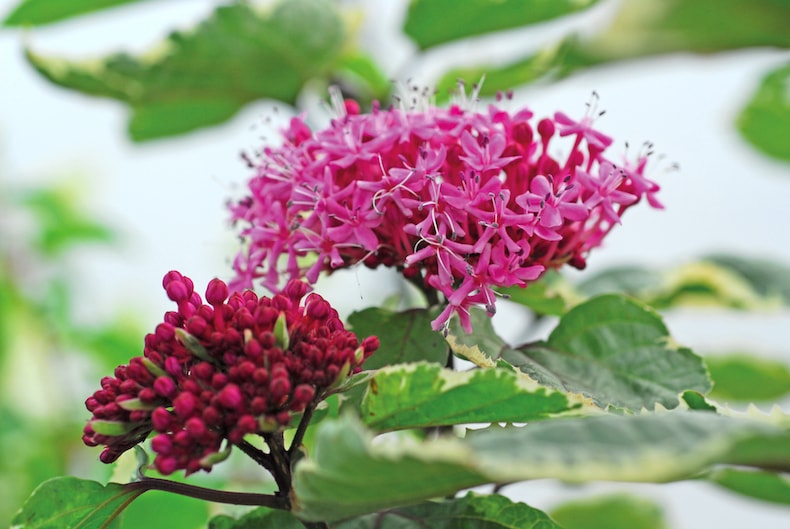
As a more compact variety, Clerodendron 'Pink Diamond' is perfectly suited to planting in containers
Image: Thompson & Morgan
Clerodendron is another great plant for a sheltered position. It’s rarely seen in UK gardens but is well worth a go! Clerodendron bungei 'Pink Diamond' is a particularly attractive choice with cream and olive-green variegated foliage that turns fiery red in autumn. Large heads of perfumed flowers appear from late summer, often continuing into October. Curiously, the aromatic foliage tends to have the 'Marmite-effect' - some folks love it while others don’t!
4. Lobelia cardinalis
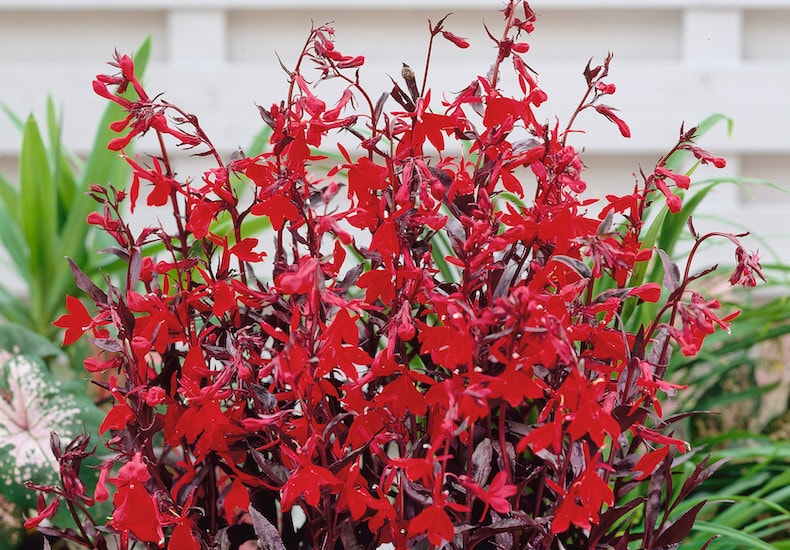
Lobelia cardinalis flowers from August to October and brings gorgeous late season colour to your garden
Image: Thompson & Morgan
Late summer colour needn't be confined to sunny perennial borders - the scarlet blooms of Lobelia cardinalis brighten up pond margins and moist, boggy areas from August to October. Lobelia cardinalis 'Queen Victoria' has contrasting purple-tinted foliage which makes a majestic and exotic-looking focal point.
5. Japanese anemone
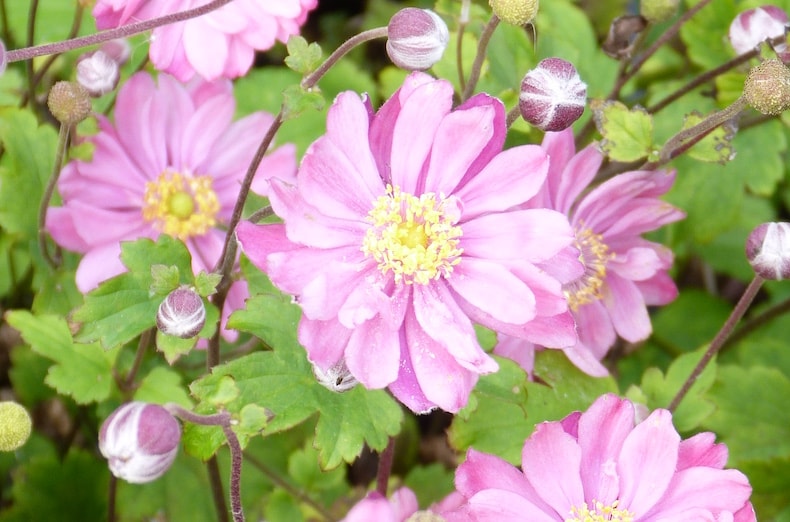
Japanese anemones are staples in cottage garden planting schemes
Image:
Anemone hupehensis var. japonica 'Pamina' from Thompson & Morgan
Anemone hupehensis and A. x hybrida have long been associated with the ordered style of traditional Japanese gardens, hence their common name of Japanese Anemone. I've always found them to be utterly reliable. The elegant, cupped-shaped blooms rise above rounded clumps of handsome foliage, forming large drifts in borders.
6. Verbena bonariensis
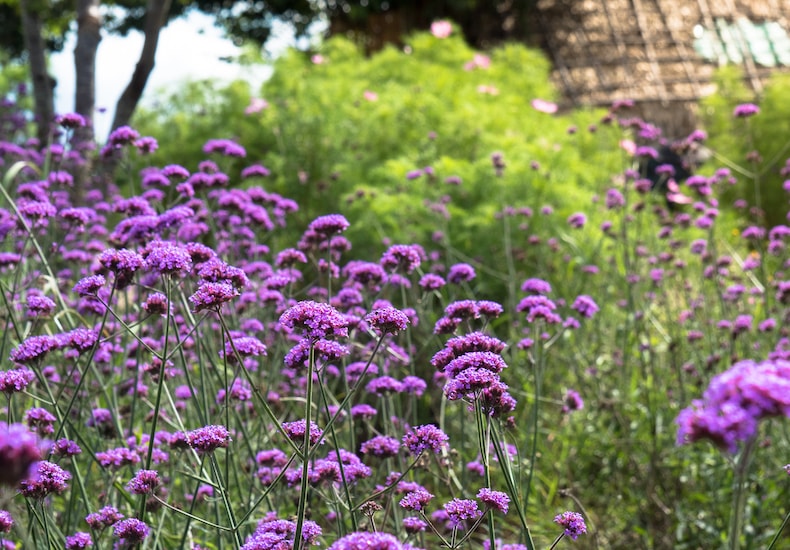
Use verbena bonariensis in wildlife gardens to attract bees and butterflies
Image: Thompson & Morgan
Verbena bonariensis has surged in popularity, making it instantly recognisable to many gardeners. The flattened, lavender-purple flowers bring a swaying, airy effect to the back of borders, and seem to glow at dusk and on cloudy days. Blooming from July, this tall perennial reaches its peak in late summer and continues into autumn. A single plant is easily lost in crowded late-summer borders, so add large swathes for maximum effect.
7. Hydrangea paniculata
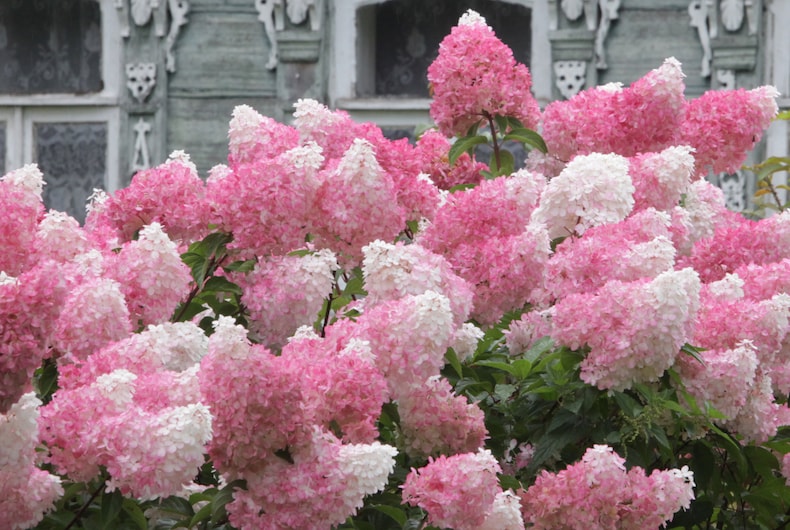
Hydrangea 'Vanille Fraise' can survive in temperatures down to -20°C
Image: Thompson & Morgan
When you mention hydrangeas, most people think of mophead macrophylla types. But Hydrangea paniculata is exquisitely refined, with conical-shaped flower heads in late summer. Vibrant autumn foliage extends its season of interest well into October, making this a real showstopper, particularly in cold, north-facing spots. Hydrangea paniculata 'Vanille Fraise' is a popular cultivar with pink flushed blooms or, for smaller gardens, try the low-growing H. paniculata 'Bobo' which reaches just 90cm (36") tall.
8. Pennisetum
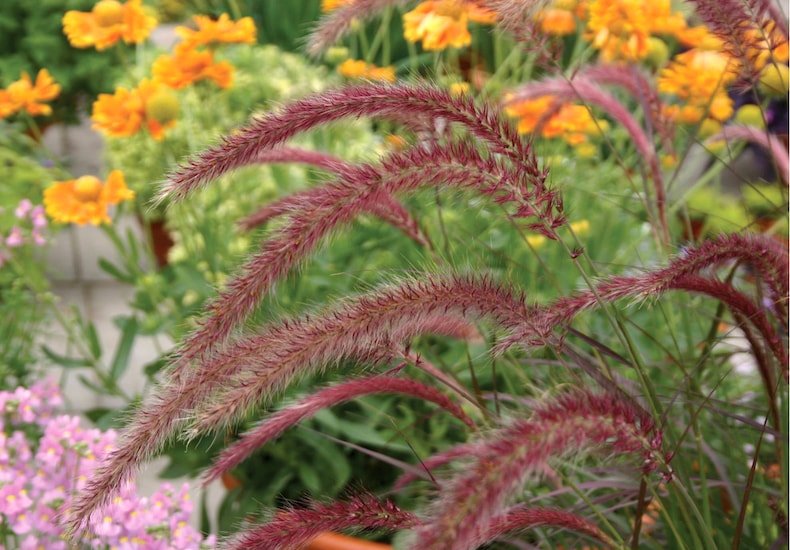
Use the fluffy seedheads of Pennisetum in elegant dried flower displays
Image: Thompson & Morgan
Ornamental grasses create valuable texture in borders, softening hard landscaping and providing good ground cover too. Pennisetum is an attractive genus, with many different forms and foliage colours. Pennisetum ‘Rubrum' is a favourite for containers and the front of borders with fluffy purple flower spikes above neat clumps of burgundy foliage. For a similar effect at the back of the border use the taller species P. alopecuroides.
9. Caryopteris
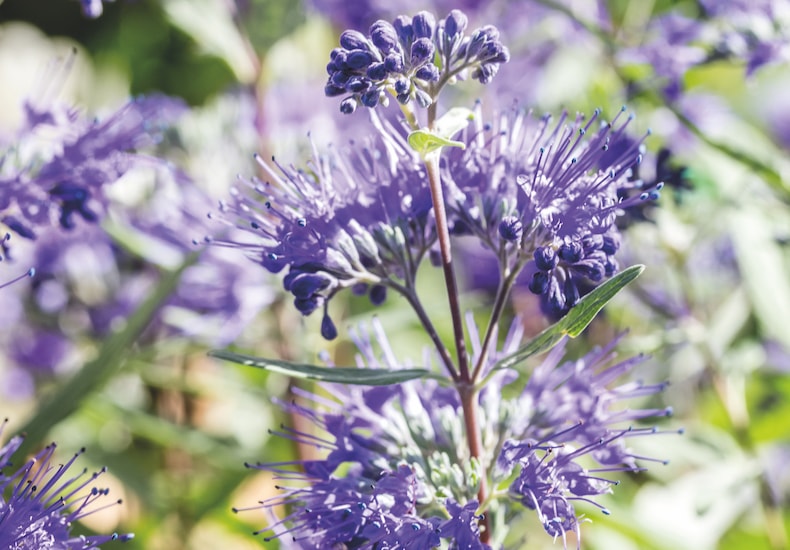
With a compact and manageable habit, Caryopteris 'Heavenly Blue' thrives in even the smallest gardens
Image: Thompson & Morgan
The compact, rounded habit of Caryopteris makes it useful for the middle of mixed borders, where it works nicely with grasses and low-growing perennials. The glorious blue flowers are a good source of nectar and attract plenty of pollinating insects. Lots of cultivars have interesting aromatic foliage, from traditional grey leaves to the more vibrant gold-green of Caryopteris x clandonensis 'Hint of Gold'. My personal favourite is Caryopteris x clandonensis 'White Surprise' for its delicate variegation.
Sedum
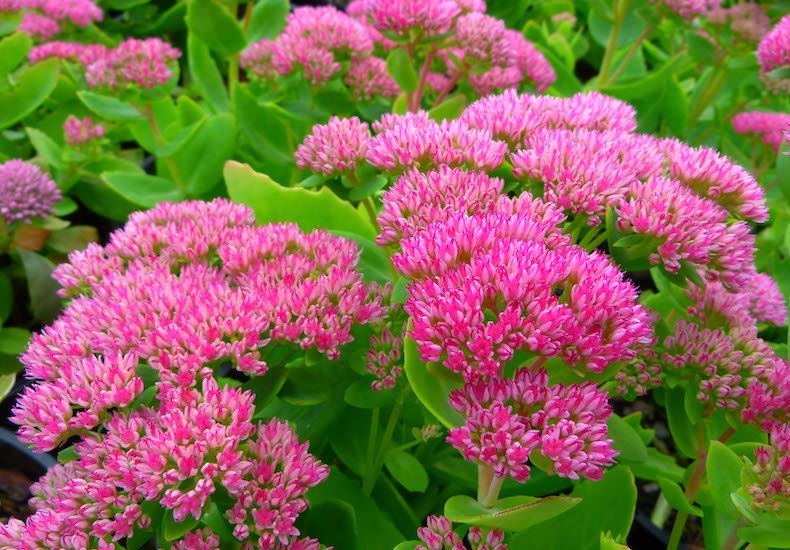
If you want to attract butterflies to your garden, plant sedum
Image: Thompson & Morgan
Sedums are fleshy-leaved perennials that are extremely drought-tolerant. Thriving in the front of hot, well-drained, sunny borders, their large panicles of tiny flowers are a magnet for butterflies. If you want a nectar-rich variety, try Sedum spectabile 'Brilliant' which is ideal for herbaceous borders and gravel gardens. Sedum ussuriense 'Turkish Delight' has a low-growing form and intensely dark foliage that looks particularly good in rockeries.
For everything you need to know about summer flowers, including how to keep your borders bright and colourful for as long as possible, visit our dedicated hub page.
See all Top 10 articles
Popular Top 10 Articles
- Top 10 Winter Vegetables
- Top 10 Potato Varieties
- Top 10 Easy-to-grow Fruit
- Top 10 Winter Bedding Plants
- Top 10 Summer Bedding Plants
- Top 10 Spring Flowering Bulbs
- Top 10 Summer Flowering Bulbs
- Top 10 Autumn/ Winter Flowering Bulbs
- Top 10 Evergreen Shrubs
- Top 10 Evergreen Shrubs for Small Gardens
- Top 10 Easy-to-grow Flowers
- Top 10 Cut Flowers
- Top 10 Hanging Basket Plants
- Top 10 Plants for Patios
- Top 10 Houseplants
- Top 10 Climbing Plants
- Top 10 Perennial Plants
- Top 10 Hardy Plants for Winter
- Top 10 Winter Garden Tips
- Top 10 Ornamental Grasses

Written by: Sue Sanderson
Plants and gardens have always been a big part of my life. I can remember helping my Dad to prick out seedlings, even before I could see over the top of the potting bench. As an adult, I trained at Writtle College where I received my degree, BSc. (Hons) Horticulture. After working in a specialist plantsman's nursery, and later, as a consulting arboriculturalist, I joined Thompson & Morgan in 2008. Initially looking after the grounds and coordinating the plant trials, I now support the web team offering horticultural advice online.Sign Up For Exclusive Special Offers




© 2024 Thompson & Morgan. All rights reserved. A division of Branded Garden Products Limited.



